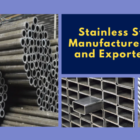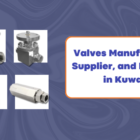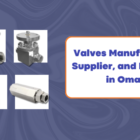Unlocking Syphon Tubes’ Potential: From Gauge Protection to Fluid Transfer Mastery
Often overlooked, syphon tubes play a crucial role in safeguarding pressure gauges from the damaging effects of high temperatures and rapid pressure fluctuations. These unassuming components are essential for maintaining the accuracy and longevity of pressure measurement instruments.
What are Syphon Tubes/Pipes?
Syphon tubes, also known as syphon tubes or pipes, are simple yet effective devices used for transferring liquids between two containers at different levels. They operate on the principle of gravity and atmospheric pressure, allowing liquid to flow from a higher container to a lower one without the need for external pumping or suction. Syphon tubes consist of a flexible or rigid tube that is submerged in the liquid to be transferred, with one end positioned higher than the other to create a siphoning action.
How Do Syphon Tubes/Pipes Work?
Syphon tubes/pipes work on the principle of atmospheric pressure and gravity. When one end of the syphon is filled with liquid and placed in a higher reservoir, the liquid flows through the tube due to the pressure difference, eventually discharging at the lower end.
Types of Syphon Tubes/Pipes
Syphon tubes and pipes come in several types, each suited to specific applications and requirements:
- Straight U Type Syphon Tubes: These straight tubes are easy to install and maintain, making them suitable for various general-purpose applications.
- Q Type Syphon Tubes: Known for their coiled or spiral shape, these tubes minimize pressure loss and are ideal for applications requiring consistent flow rates.
- O Type Syphon Tubes: Featuring a circular design, these tubes are perfect for continuous fluid transfer applications.
- Plate U Type Syphon Tubes: These U-shaped tubes are commonly used in cooling applications due to their efficient design.
Applications of Syphon Tubes/Pipes
Syphon tubes/pipes find applications across various industries due to their versatility:
- Industrial Processing: Used in transferring chemicals and fluids.
- HVAC Systems: Essential for cooling and heating applications.
- Petrochemical Industry: Used in refining and transferring petroleum products.
- Pharmaceutical Industry: Crucial for transferring sterile liquids without contamination.
- Food and Beverage Industry: Ensures hygienic transfer of liquids.
Syphon Tube Specifications
At Mcneil Instruments, we offer a wide range of syphon tubes/pipes to cater to different industrial needs:
- Syphon Material: Available in various grades such as SS 304, SS 316, SS 316L, SS 310S, SS 317L, SS 6MO, etc.
- Syphon Pipe: Offered in 3/8″ NB & 1/2” NB with Pipe Sch 40, 80, or 160.
- Connection Type: Options include MxM, MxF, FxF.
- Thread Size: Available in 3/8” or ½” BSP or NPT.
- Pressure Rating (Sch 40): Up to 135 bar at 400°C.
- Types: Q type, O Type, Plate U Type, Straight U Type.
Common Sizes of Stainless Steel 304 Syphon
We provide a variety of common sizes for different syphon types:
- U Type Syphon: SS 316 & SS 304 Syphons, 1/4” NPTM x 1/4” NPTM, SCH 40.
- Umbrella Syphon: SS 316 & SS 304 Syphons, U type, 1/4” NPTM x 1/4” NPTM, SCH 80.
- 90 Degree Pigtail Q-type Syphon: SS 316 & SS 304 Syphons, 90 deg, Q-type, 1/2″ NPTM, Schedule 80.
- Pigtail Syphon Q Type 180 Degrees: SS 316 & SS 304 Syphons, 180 deg, 1/2″ NPTM x 1/2″ NPTF, Schedule 80.
Benefits of Using Syphon Tubes
- Extended Gauge Life: Protects gauges from damage, ensuring accurate readings.
- Improved Safety: Prevents gauge failure and potential hazards.
- Enhanced Reliability: Ensures consistent and reliable pressure measurements.
Choosing the Right Syphon Tube
Selecting the appropriate syphon tube depends on factors such as:
- Pressure and Temperature: The tube must withstand the operating conditions.
- Fluid Compatibility: The material should be compatible with the fluid being measured.
- Connection Type: Ensure compatibility with existing piping and instrumentation.
- Gauge Type: The syphon tube should be suitable for the specific gauge being used.
Conclusion
Syphon tubes and pipes are essential components in fluid transfer systems across various industries. At Mcneil Instruments, we offer a wide range of syphon tubes and pipes, designed to meet the highest standards of quality and precision. Whether for industrial processing, HVAC systems, or any other application, our syphon tubes and pipes provide reliable and efficient solutions.
For more information or to place an order, visit our website or contact our expert team today!
#Syphontubes #syphonpipes #pressuregaugeprotection #fluidtransfer #Qtypesyphontubes #Otypesyphontubes #Utypesyphontubes #industrialsyphontubes #stainlesssteelsyphontubes #syphontubespecifications #fluidtransfersolutions







